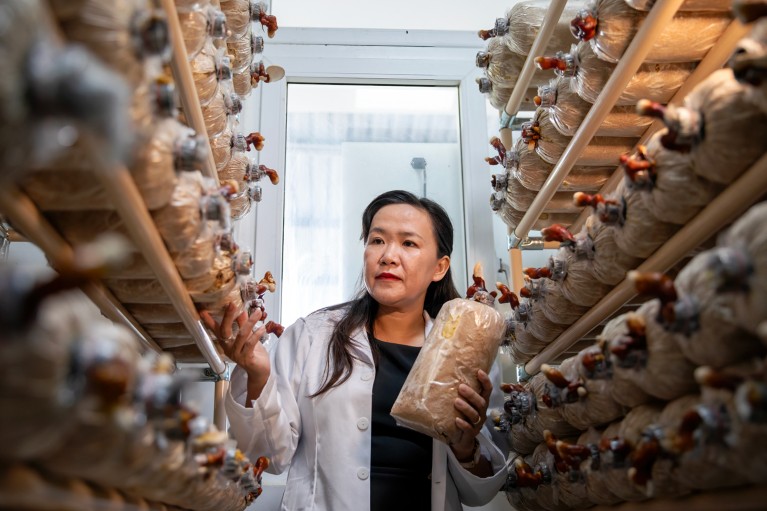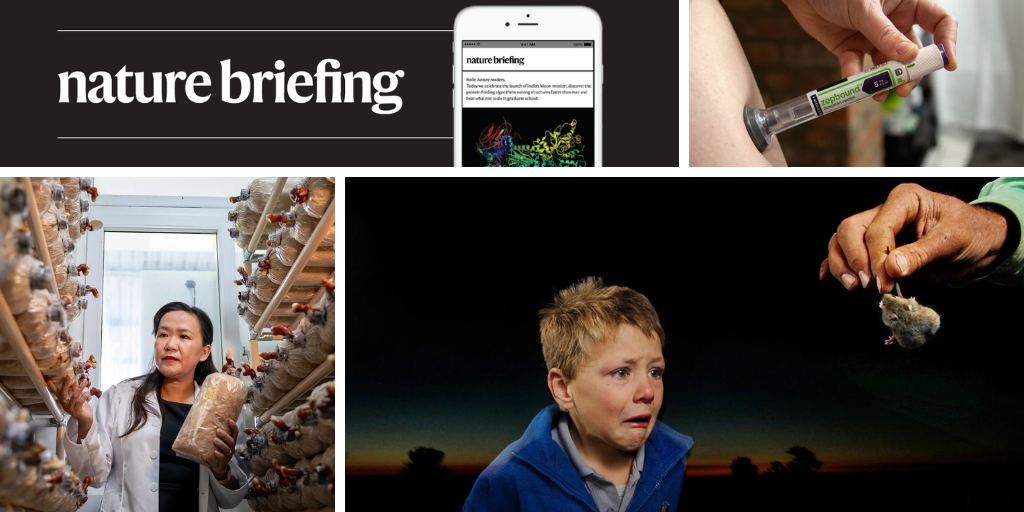Hello Nature readers, would you like to get this Briefing in your inbox free every day? Sign up here.

An ongoing trial of Zepbound (tirzepatide) is testing effects on heart disease in people with obesity and diabetes.Credit: Shelby Knowles/Bloomberg via Getty
Scientists are developing a crop of competitors to weight-loss drugs such as Ozempic that, researchers hope, will be cheaper, more convenient and offer benefits beyond fat loss. Five of those being tested in 2025 are shaping up to be big hitters, including the oral small-molecule drug candidate Orforglipron, developed by Eli Lilly; and MariTide from Amgen, which seems to have longer-lasting weight-loss effects. There is also a suite of ‘underdog’ candidates in development, including synthetic versions of the hormone amylin, which might help to preserve muscle while reducing fat.
The performance of AlphaGeometry2, an artificial-intelligence (AI) problem solver created by Google DeepMind, has surpassed the level of the average gold medallist in the International Mathematical Olympiad (IMO), a competition that sets tough maths problems for gifted high-school students. The system was able to solve 84% of all geometry problems given in IMOs in the past 25 years, compared with 54% for its predecessor, the first AlphaGeometry. The team made several improvements on the first iteration, including the integration of Google’s large language model Gemini.
Reference: arXiv preprint (not peer reviewed)
Two regions of the brain work together to suppress fear in mice. Through repeated exposure, researchers taught mice that a shadow — used to mimic the shadow of a swooping bird — was not dangerous. The team then used a technique called optogenetics to turn specific brain neurons on or off. When they silenced parts of the cerebral cortex that analyse visual stimuli, the mice continued to try to escape from the shadow. Mice that had learned to be brave remained courageous when these brain areas were disrupted because the memory was stored in another region called the ventrolateral geniculate nucleus.
Astronomers have spent the past few months measuring the odds of space rock 2024 YR4 hitting Earth in 2032. The chances of a strike have teetered within a range from 1.3% to 2.3%. This variation is expected when plotting the possible future orbits of newly discovered asteroids, say astronomers. “What matters is that the probability of impact is very small, and that it is likely to drop to zero as we keep observing 2024 YR4,” says navigation engineer Davide Farnocchia.
The New York Times | 6 min read
Features & opinion
When anthropologist Raymond Dart described Australopithecus africanus — based on a fossil known as the Taung Child — he launched science toward the understanding that human ancestors evolved in Africa. A century on, the fossil is still prompting questions about human evolution. Dart judged Taung to be a six-year-old child who died around one million years ago. We now know that Taung was around 3.8 years old and lived some 2.58 million years ago — raising important questions about when, why and how an unusual lifestage — childhood — evolved.
In the second episode of What’s in a name, the Nature Podcast explores how the names chosen by scientists help, or hinder, communication with the public. Naming hurricanes, for example, can help people understand their dangers. But names don’t always have a positive influence. In the early 2000s, some US politicians were advised to use ‘climate change’ instead of ‘global warming’, the term widely known by the public at the time, to downplay its severity to voters. “[Their efforts] largely had the effect they wanted,” says science historian Naomi Oreskes. “Which was to delay meaningful action on climate change and what is now, using a deliberate change in vocabulary, the climate crisis.”
Nature Podcast | 35 min listen
Subscribe to the Nature Podcast on Apple Podcasts, Spotify or YouTube Music, or use the RSS feed.
Where I work

Ho Thi Thanh Van is a chemical scientist at Nguyen Tat Thanh University in Ho Chi Minh City, Vietnam.Credit: Maika Elan for Nature
Chemical scientist Ho Thi Thanh Van’s time is split between researching how to make fuel cells more efficient and studying medicinal plants, such as these lingzhi mushrooms (Ganoderma lingzhi) she grows in her lab. “The opportunity to contribute to my community is what drives my research. I love training my students,” she says. (Nature | 3 min read)
On Friday, Leif Penguinson was exploring the shores of Tjøme island in Norway. Did you find the penguin? When you’re ready, here’s the answer.
Thanks for reading,
Flora Graham, senior editor, Nature Briefing
With contributions by Jacob Smith and Smriti Mallapaty
Want more? Sign up to our other free Nature Briefing newsletters:
• Nature Briefing: Careers — insights, advice and award-winning journalism to help you optimize your working life
• Nature Briefing: Microbiology — the most abundant living entities on our planet — microorganisms — and the role they play in health, the environment and food systems
• Nature Briefing: Anthropocene — climate change, biodiversity, sustainability and geoengineering
• Nature Briefing: AI & Robotics — 100% written by humans, of course
• Nature Briefing: Cancer — a weekly newsletter written with cancer researchers in mind
• Nature Briefing: Translational Research — covers biotechnology, drug discovery and pharma


